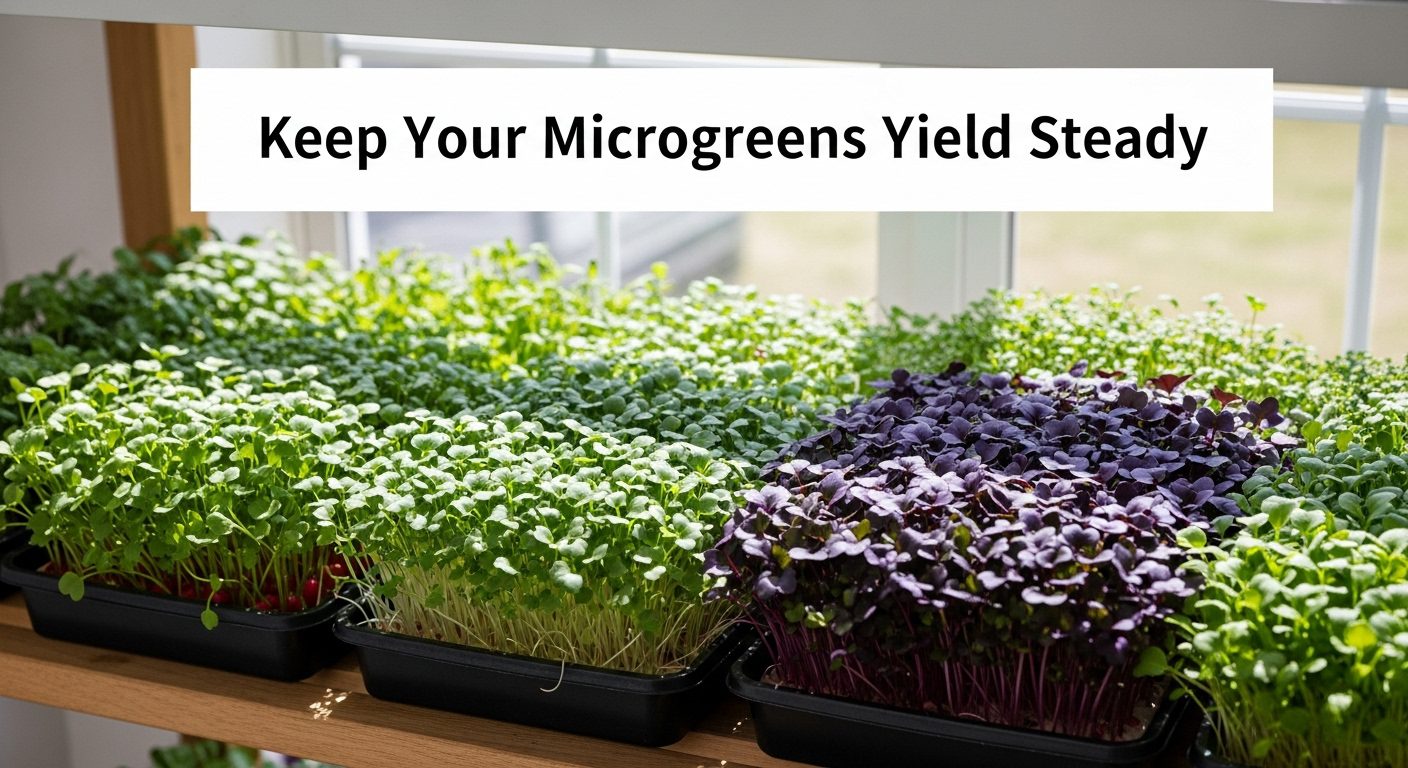
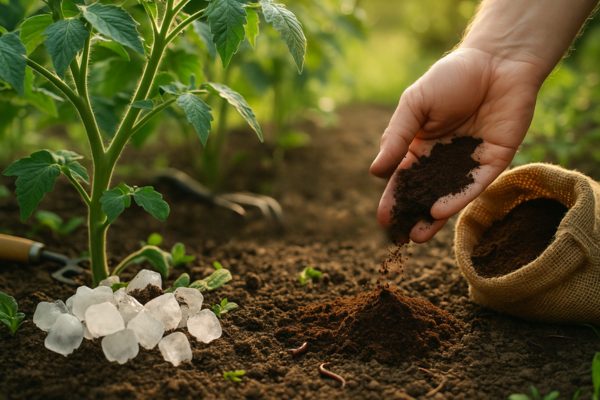
If you want to make your garden healthier in a natural way, coffee grounds for garden use can be a wonderful help! They are full of important nutrients that can improve the soil and help your plants grow strong. It doesn’t matter if you’re an expert gardener or just starting, adding used coffee grounds homemade fertilizer can change how your garden looks and grows.
Coffee grounds can boost nitrogen levels, which is great for plants, and they can even attract helpful earthworms. There are so many fun ways to use this common item to make your coffee grounds garden benefits really shine through.
From enriching soil to deterring pests, coffee grounds for plants offer countless advantages. Are you ready to discover all the creative ideas about how to use grounds for your garden? Let’s dive into these exciting ways to transform your outdoor space!
Coffee grounds are an excellent addition to your garden soil, as they help improve soil structure. When learning how to use coffee ground items on the garden, mixing them into the soil enhances drainage, aeration, and moisture retention. Their coarse texture helps break up heavy clay soils, allowing roots to penetrate more easily.
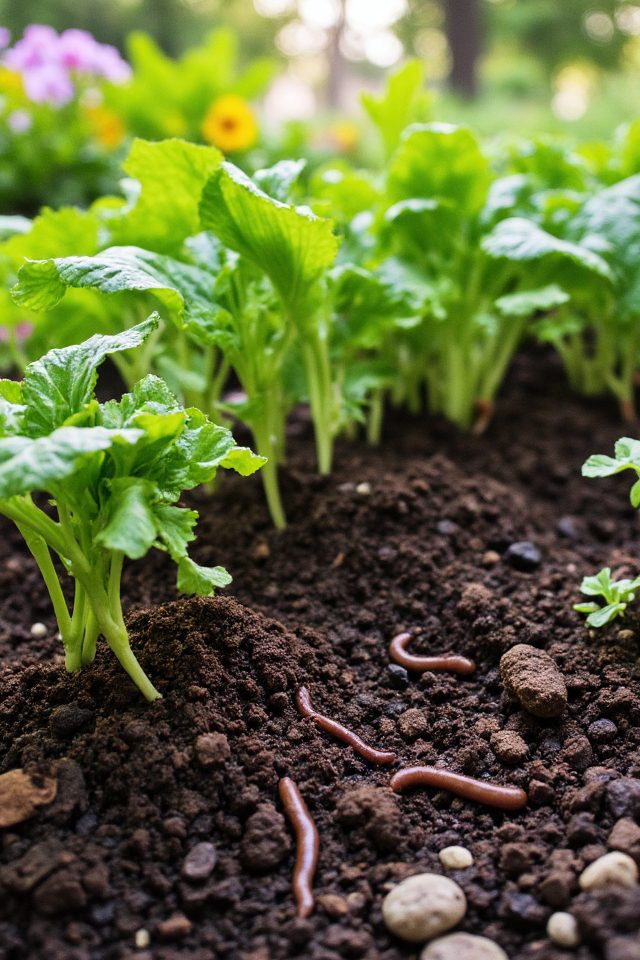
Pro tips for incorporating coffee grounds in garden soil: • Mix no more than 20% coffee grounds with existing soil to maintain proper pH balance • Work the grounds into the top 6-8 inches of soil for best results • Allow grounds to decompose for 2-3 weeks before planting sensitive seedlings • Combine with other organic matter like compost for enhanced benefits
Coffee grounds are a fantastic way to boost nitrogen levels through garden uses with coffee grounds. Rich in this essential nutrient, they can enhance soil fertility and promote healthy plant growth. Mixing coffee grounds as fertilizer into your compost or directly into the soil improves its structure and drainage while attracting beneficial earthworms.
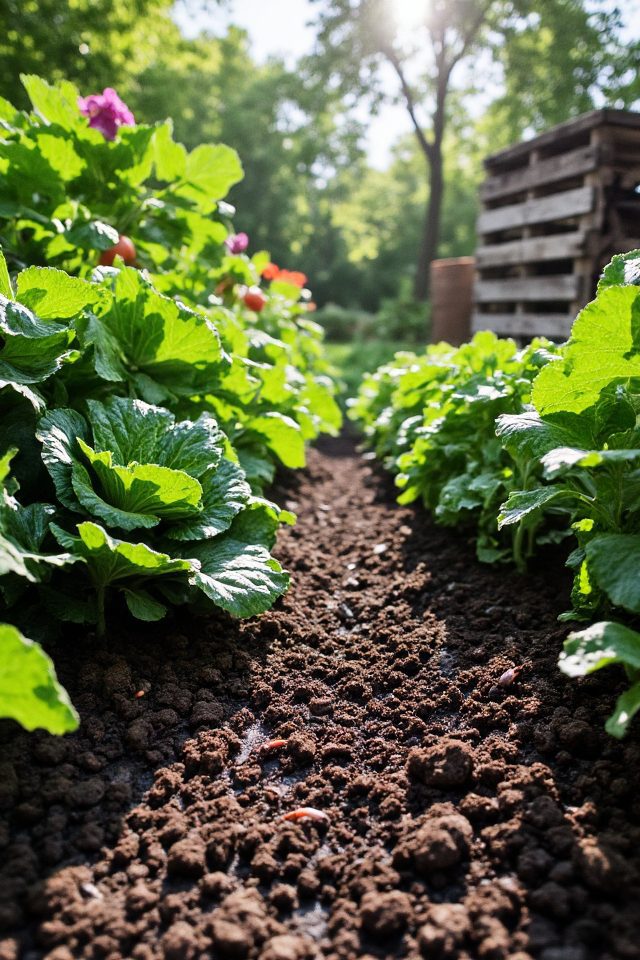
Expert tips for nitrogen enrichment: • Use fresh grounds for immediate nitrogen release, aged grounds for slow release • Monitor plant leaves for signs of nitrogen deficiency (yellowing) before application • Apply coffee grounds and gardens mixture during active growing seasons • Balance with carbon-rich materials like dried leaves to prevent nitrogen burn
Attracting earthworms to your garden is one of the many coffee grounds garden benefits. These nutrient-rich grounds provide an excellent food source for worms, encouraging them to thrive in your soil. By sprinkling coffee grounds for plants around your garden or mixing them into your compost, you create a welcoming environment.
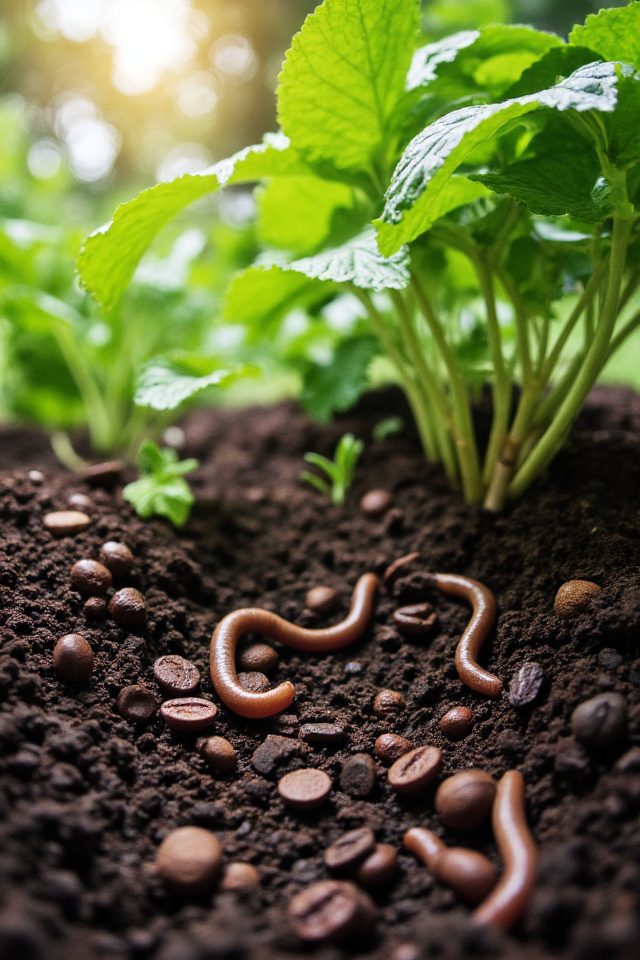
Earthworm attraction strategies: • Create worm-friendly zones with a mix of grounds and shredded newspaper • Keep coffee ground areas consistently moist but not waterlogged • Add grounds gradually to avoid overwhelming the worm population • Combine with kitchen scraps for a diverse worm diet
Using coffee grounds in garden beds can be an effective way to deter pests. The strong scent of coffee can repel unwanted insects like ants, snails, and slugs, which are often troublesome for plants. Simply sprinkle used grounds around the base of your plants as a natural barrier.
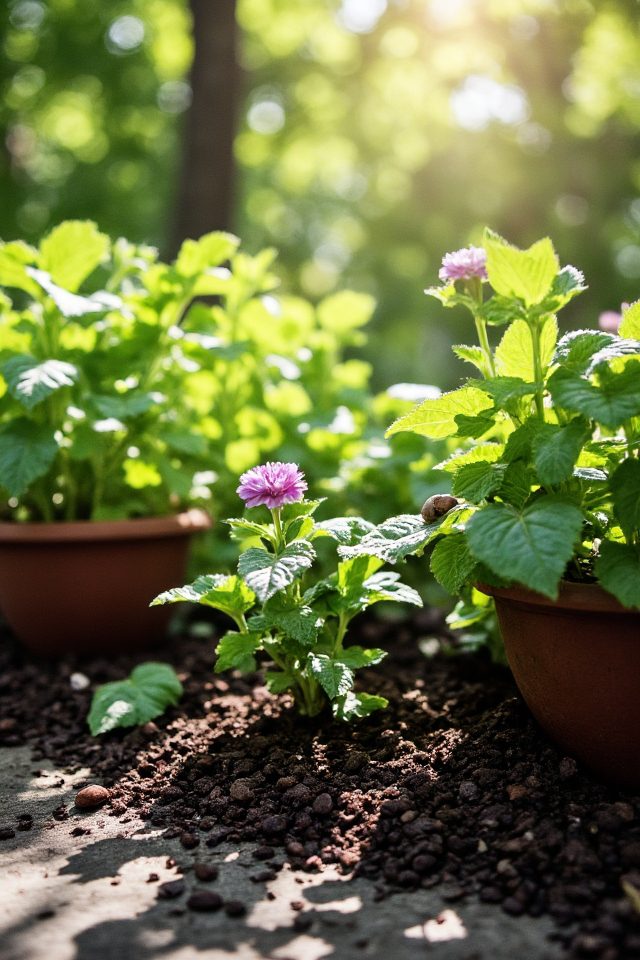
Pest control application tips: • Reapply after heavy rain or watering for continued effectiveness • Create a 2-inch barrier around vulnerable plants • Mix with crushed eggshells for enhanced slug deterrence • Store dry grounds in airtight containers for emergency pest control
Brew compost is an excellent way to recycle coffee grounds as fertilizer and enhance your garden’s health. By mixing used coffee grounds with traditional compost materials like kitchen scraps and yard waste, you create a nutrient-rich organic fertilizer that demonstrates the best way to use coffee grounds around shrubs and lawn.
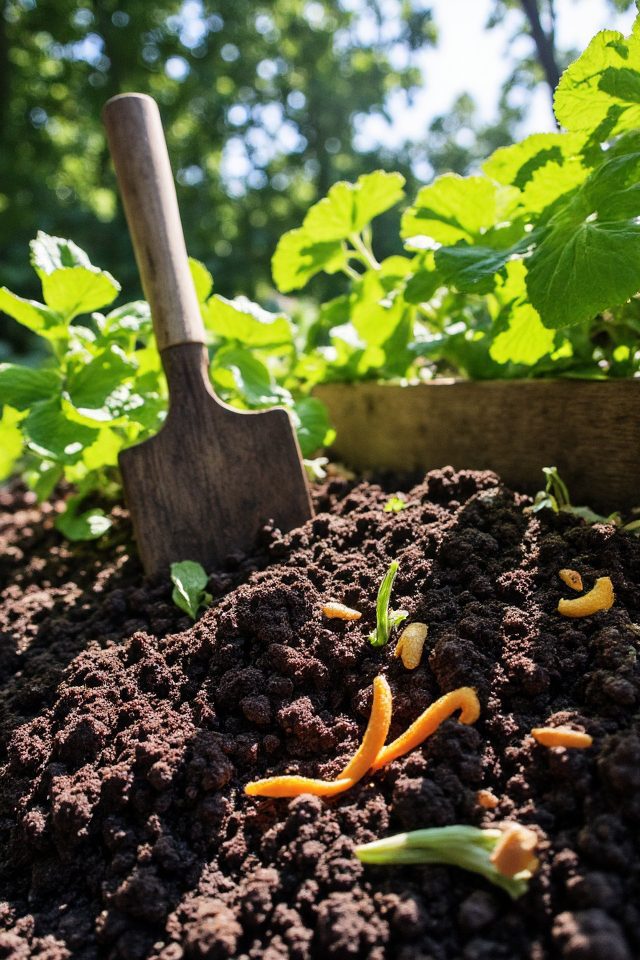
Composting success strategies: • Maintain a 1:3 ratio of coffee grounds to brown materials • Turn compost weekly to ensure even decomposition • Monitor temperature to ensure proper breakdown (130-150°F ideal) • Allow 3-6 months for complete composting before use
Coffee grounds make an excellent mulch alternative when exploring garden uses with coffee grounds. They help suppress weeds, retain moisture, and regulate soil temperature. When spread around plants, coffee grounds and gardens work together as grounds decompose and enrich the soil with essential nutrients.
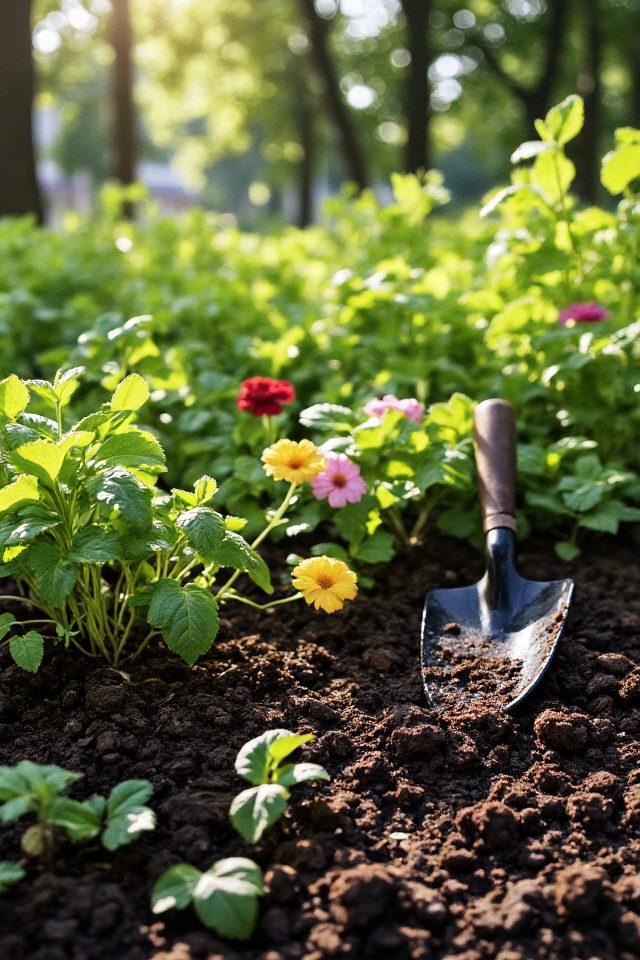
Mulching best practices: • Apply a thin layer (½ inch) to prevent mold growth • Mix with wood chips or straw for better texture • Keep mulch 2 inches away from plant stems • Refresh every 2-3 months during growing season
Coffee grounds make an excellent fertilizer for acid-loving plants such as azaleas, rhododendrons, and blueberries. Understanding how to use grounds for your garden means knowing their natural acidity can help improve soil pH, providing essential nutrients like nitrogen, phosphorus, and potassium.
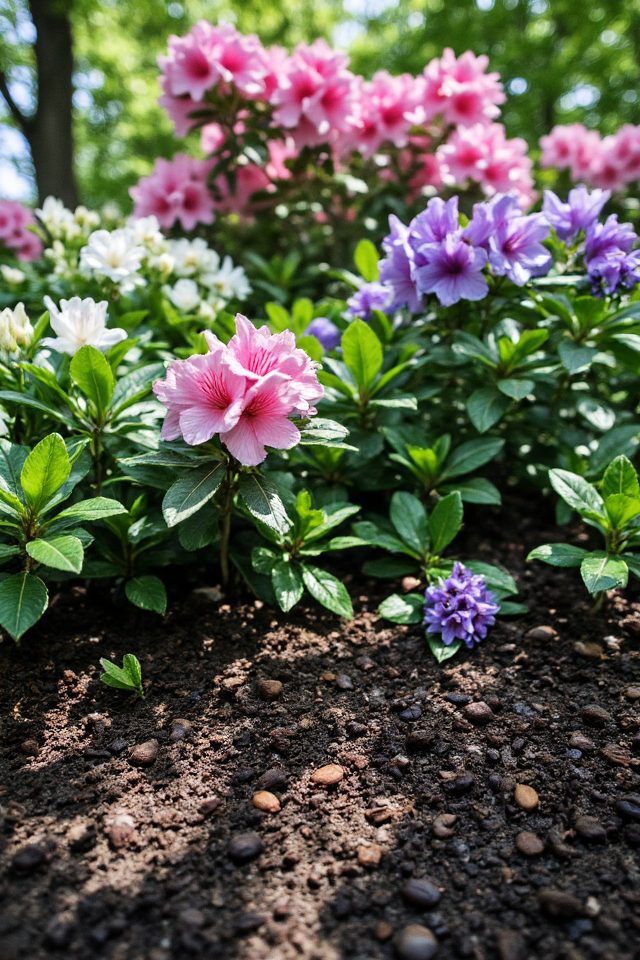
Acid-loving plant care tips: • Test soil pH before application (ideal range 5.0-6.0) • Apply monthly during growing season for best results • Mix grounds with pine needles for extra acidity • Monitor leaf color for signs of proper nutrient uptake
Coffee grounds are an excellent addition to compost bins, providing a rich source of nitrogen through used coffee grounds homemade fertilizer. When layered into your compost, they not only accelerate decomposition but also attract beneficial microbes that enhance soil health.
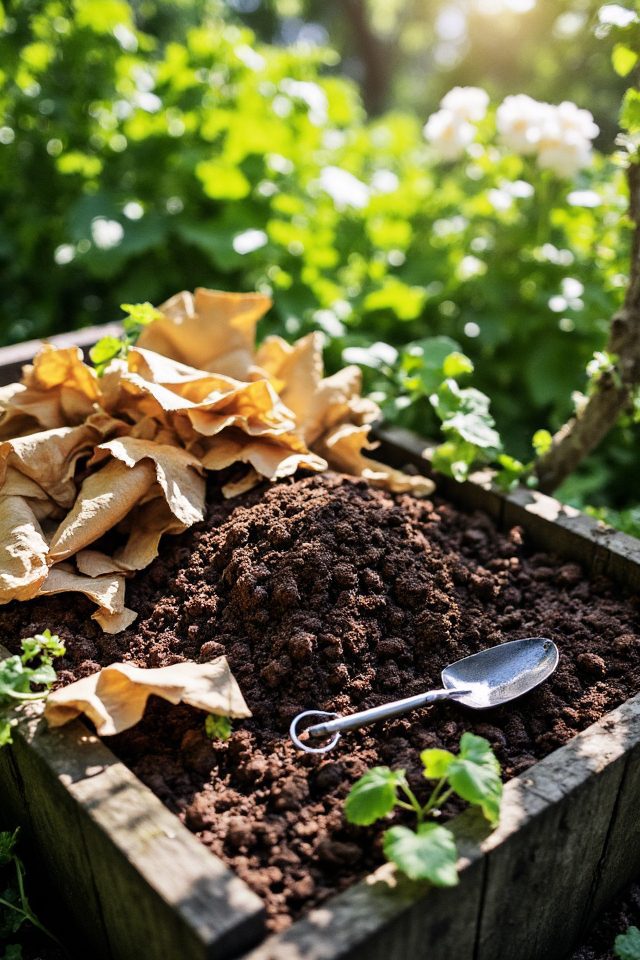
Compost bin optimization: • Add grounds in thin layers to prevent clumping • Balance with equal parts brown materials • Include coffee filters (if unbleached) for added carbon • Mix thoroughly every time you add new grounds
Using coffee grounds as fertilizer for indoor plants is a sustainable way to provide essential nutrients. Rich in nitrogen, they can enhance soil structure and drainage while promoting healthy root growth when you understand how to use coffee ground items on the garden indoors.
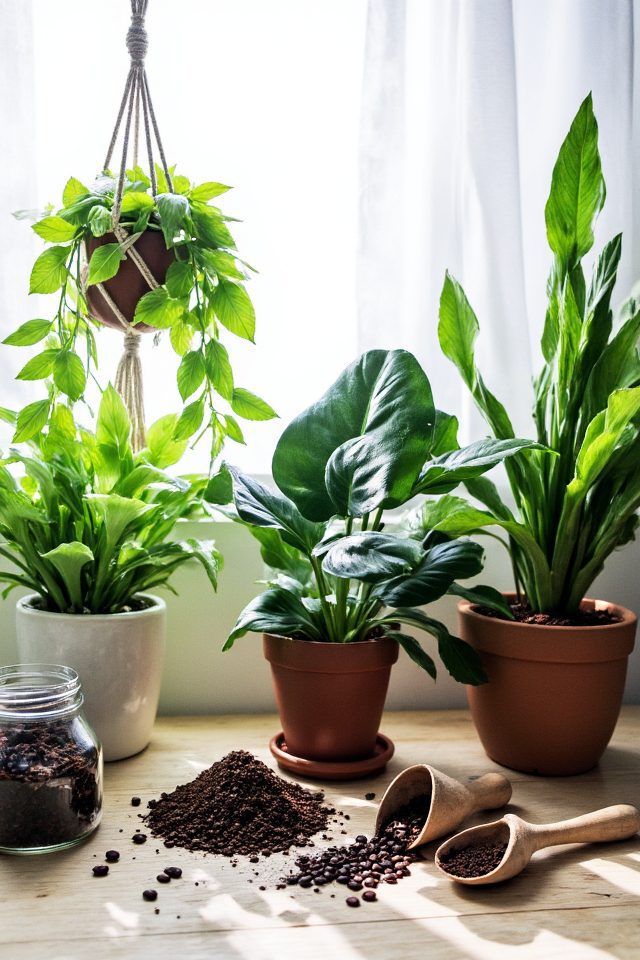
Indoor plant application tips: • Use sparingly – 1 tablespoon per 6-inch pot monthly • Mix into soil rather than leaving on surface • Avoid use on succulents and cacti • Watch for signs of over-fertilization (brown leaf tips)
Using coffee grounds for plants as seed starters is a sustainable and cost-effective gardening idea. Simply combine used coffee grounds with potting soil in biodegradable containers. The grounds provide essential nutrients while demonstrating practical garden uses with coffee grounds.
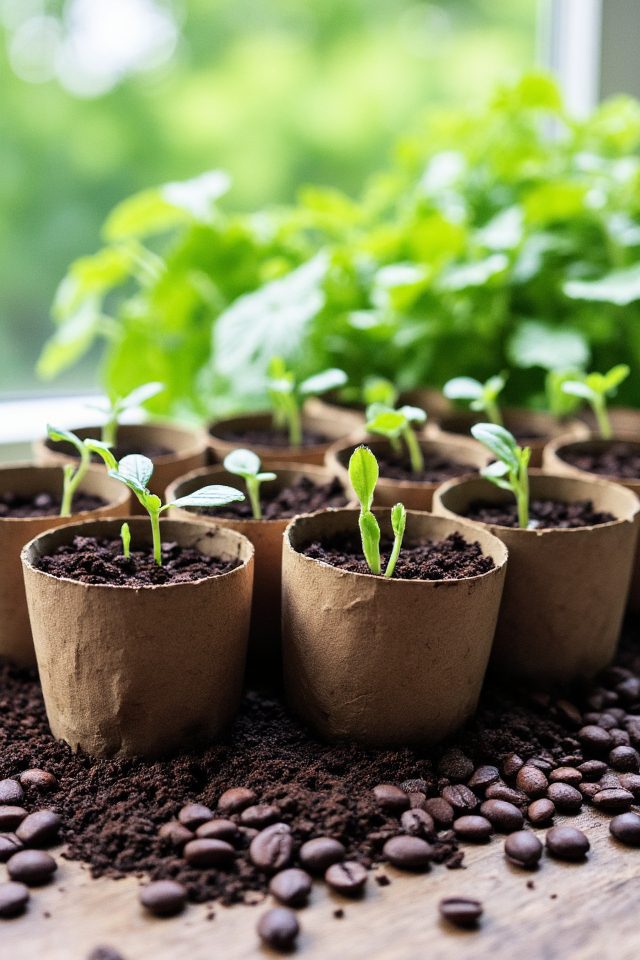
Seed starting success tips: • Use a 1:3 ratio of grounds to seed starting mix • Ensure proper drainage in containers • Keep consistently moist but not waterlogged • Transplant when seedlings develop true leaves
Coffee grounds can be a valuable addition to your compost pile, helping to reduce odors while creating used coffee grounds homemade fertilizer. Their natural nitrogen content aids in balancing the carbon-rich materials in your compost, which can prevent foul smells.

Odor control strategies: • Layer grounds between food scraps • Add after adding particularly smelly items • Maintain proper moisture levels (like a wrung-out sponge) • Turn compost more frequently when adding grounds
Coffee grounds are a fantastic natural pest repellent demonstrating smart coffee grounds garden benefits. Their strong aroma can deter unwanted insects such as ants, snails, and slugs, making it a simple yet effective solution when learning how to use grounds for your garden.
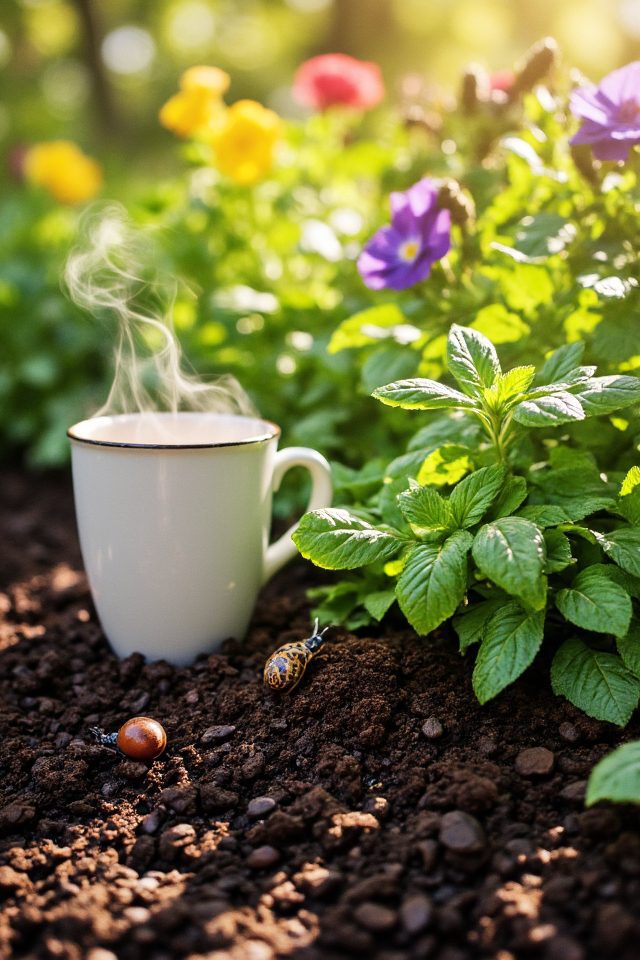
Pest barrier creation tips: • Create continuous barriers around garden beds • Refresh after rain for maintained effectiveness • Combine with diatomaceous earth for enhanced protection • Apply heavier around newly planted seedlings
Coffee grounds are an excellent addition to garden soil, particularly for improving drainage – one of the key coffee grounds garden benefits. When mixed with heavy clay soils, they enhance aeration and allow water to flow more freely, showing you the best way to use coffee grounds around shrubs and lawn.
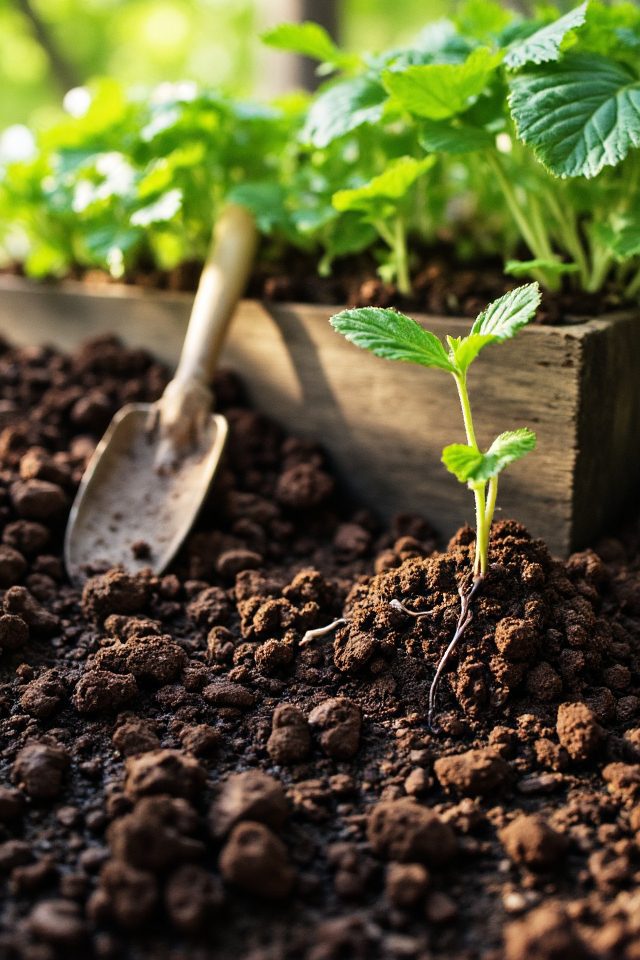
Drainage improvement techniques: • Work grounds deep into clay soil (8-10 inches) • Add coarse sand along with grounds for better results • Test drainage before and after application • Reapply annually in problem areas
Coffee grounds can be an excellent supplement for roses, offering both nutritional benefits through coffee grounds as fertilizer and pest-repelling properties. Rich in nitrogen, they help promote healthy foliage and vibrant blooms when mixed into the soil.
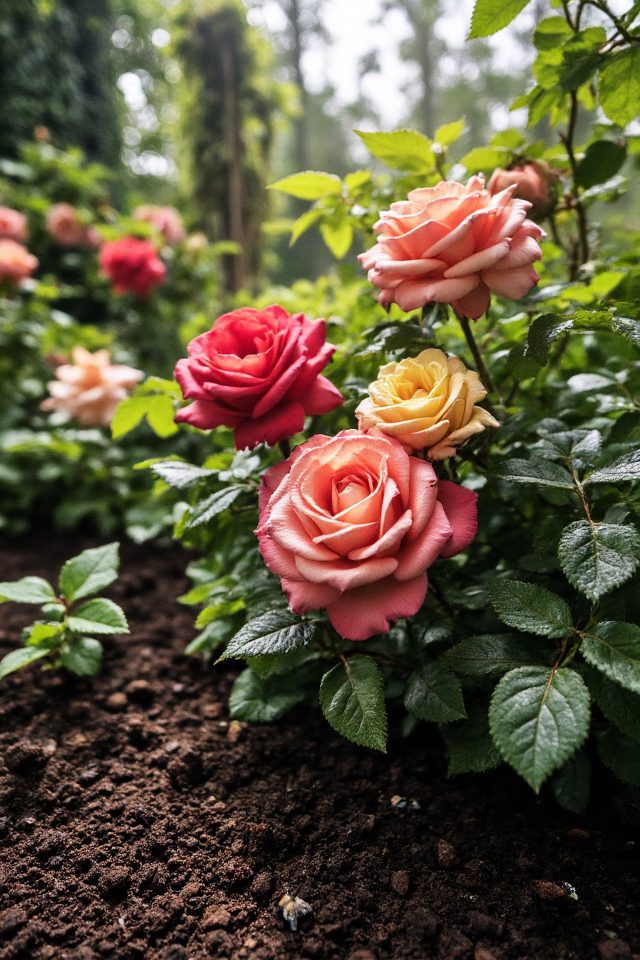
Rose care application tips: • Apply in early spring as growth begins • Mix with banana peels for added potassium • Sprinkle around base monthly during blooming season • Avoid direct contact with rose stems
Using coffee grounds for plants to make liquid fertilizer is a simple and effective way to nourish your garden. This method shows you how to use coffee ground items on the garden in liquid form for faster nutrient absorption.
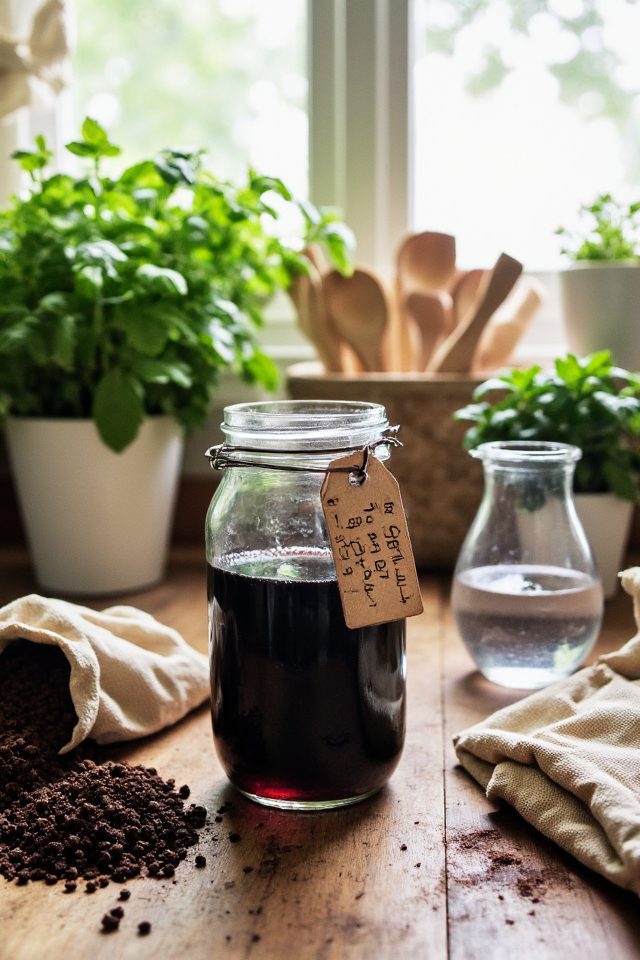
Liquid fertilizer brewing tips: • Use 1 cup grounds per gallon of water • Steep for 24-48 hours for optimal extraction • Strain through cheesecloth before use • Dilute 1:1 with water before applying to plants
Encouraging microorganism activity is essential for healthy soil when using coffee grounds in garden beds. Coffee grounds serve as an excellent organic amendment that attracts beneficial microbes, demonstrating important coffee grounds and gardens synergy.
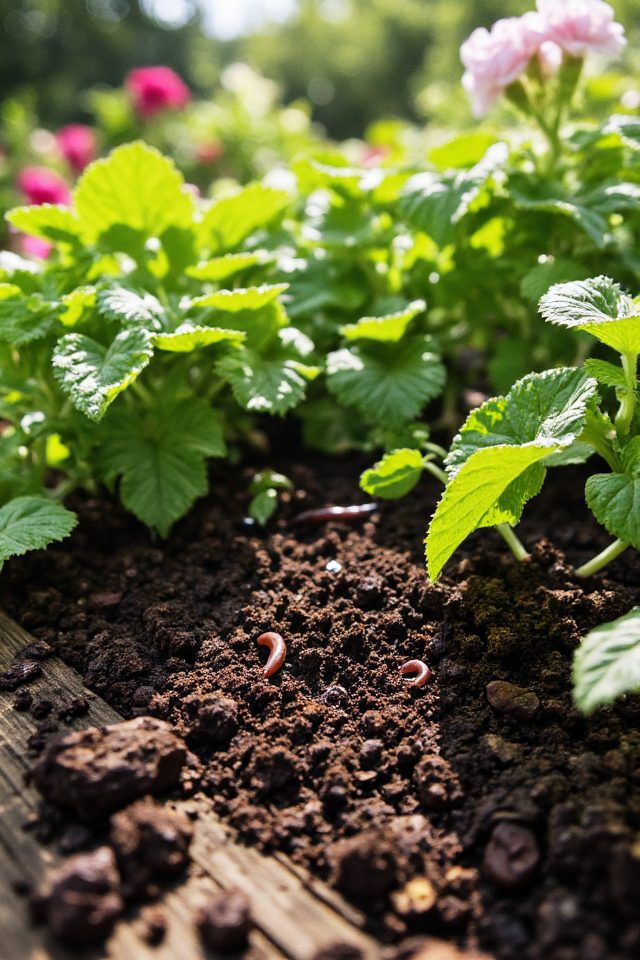
Microorganism support strategies: • Keep soil consistently moist after application • Avoid chemical fertilizers that harm microbes • Add grounds regularly but in small amounts • Combine with compost tea for enhanced benefits
Coffee grounds can greatly boost vegetable growth by enriching the soil with nitrogen through coffee grounds as fertilizer. Adding them to your garden enhances soil structure, improves drainage, and promotes healthy microbial activity – all essential garden uses with coffee grounds.
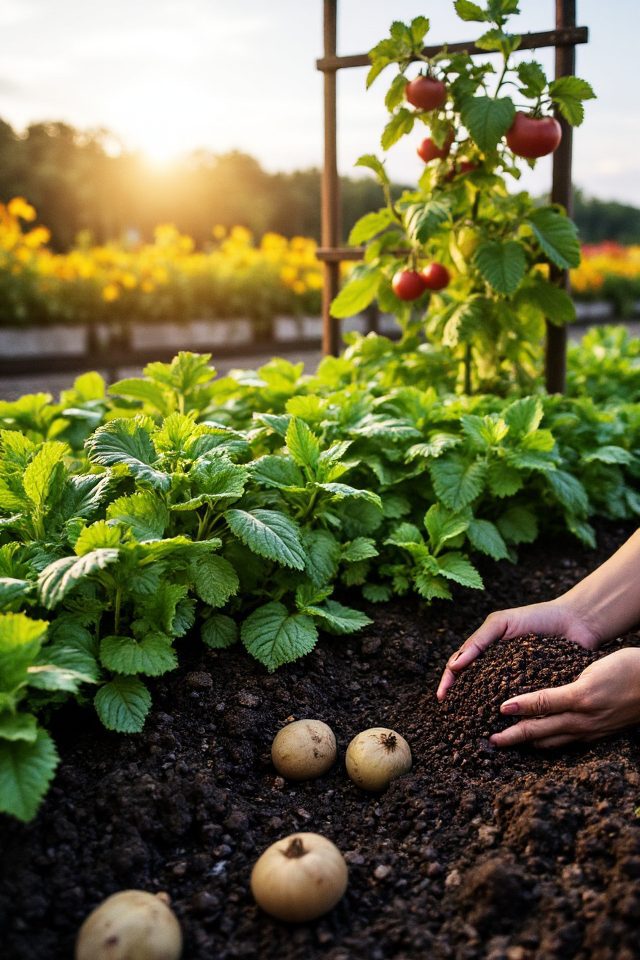
Vegetable garden application tips: • Apply before planting nitrogen-loving vegetables • Work into soil 2-3 weeks before planting • Use heavily for leafy greens, moderately for fruiting plants • Mix with aged manure for balanced nutrition
Integrating coffee grounds for garden use into raised beds can enhance soil health and boost plant growth. Rich in nitrogen, these grounds improve soil structure and provide essential nutrients, making used coffee grounds homemade fertilizer perfect for concentrated growing areas.
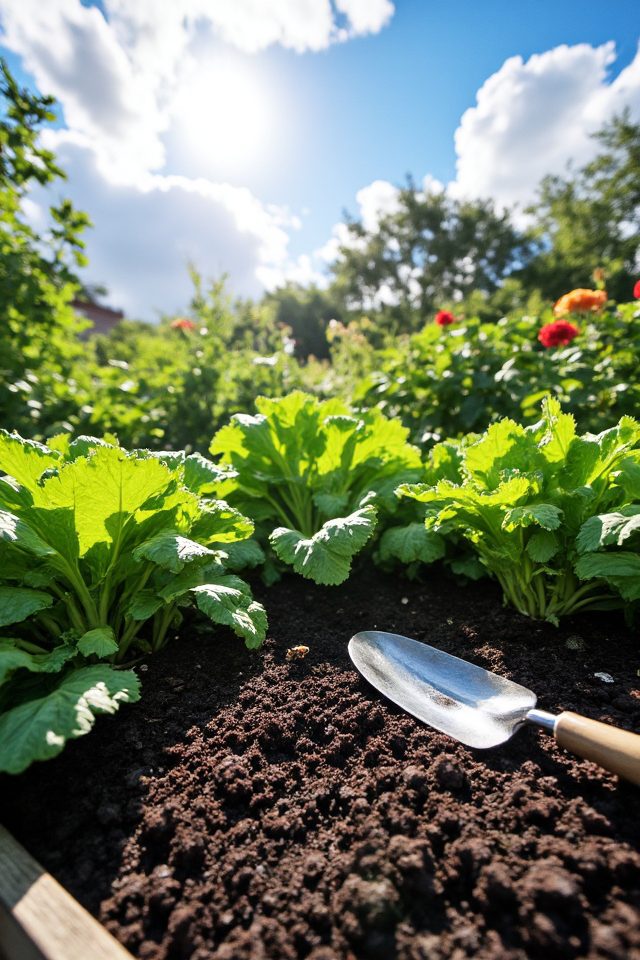
Raised bed enhancement tips: • Mix thoroughly into top 6 inches of soil • Add with each seasonal soil refresh • Combine with other amendments like compost • Monitor pH levels more closely in contained spaces
Coffee grounds can be a valuable addition to hydroponic systems when you can you use dry used coffee grounds to add iron in the garden through water systems. When used as an organic nutrient source, they provide essential nitrogen, potassium, and trace minerals.
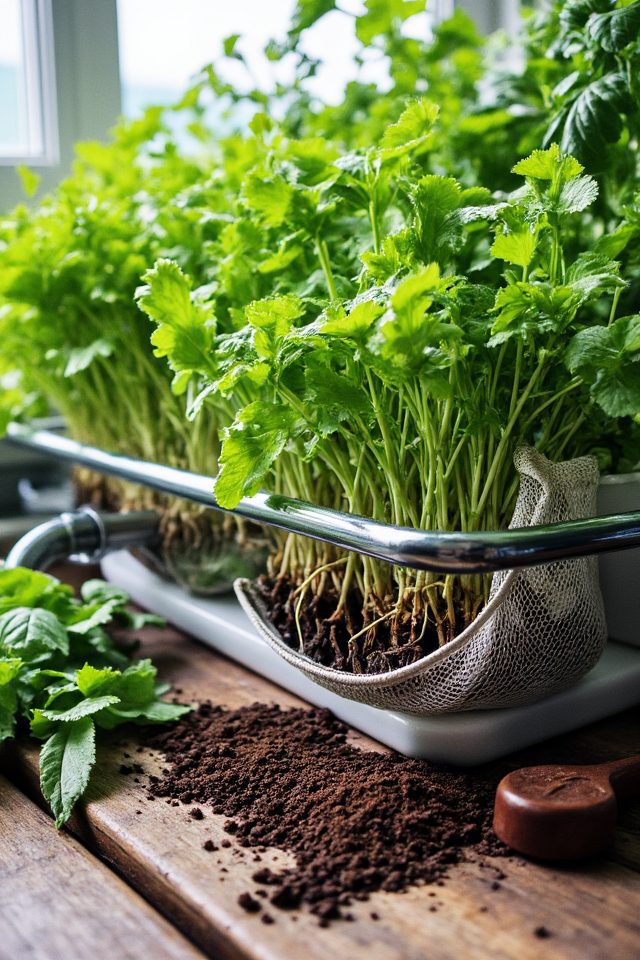
Hydroponic integration tips: • Brew into tea before adding to reservoir • Filter thoroughly to prevent system clogs • Start with weak concentrations and increase gradually • Monitor pH levels closely after addition
Using coffee grounds as fertilizer for grass can provide several benefits for healthy lawn growth. These organic materials are rich in nitrogen, making them part of the best way to use coffee grounds around shrubs and lawn areas for lush, green grass.

Lawn application strategies:
• Apply thin, even layer with spreader
• Water thoroughly after application
• Use in early spring and fall for best results
• Combine with regular lawn care routine
Using coffee grounds for garden improvement isn’t just eco-friendly; it’s a practical way to enhance soil health and boost plant growth. Whether you incorporate them into your compost or sprinkle them in your vegetable patches, these coffee grounds garden benefits are numerous.
By trying out different techniques like attracting earthworms or brewing nutrient-rich liquid fertilizer with used coffee grounds homemade fertilizer, you’ll not only nourish your plants but also reduce waste. Understanding how to use grounds for your garden opens up countless possibilities. Embrace these creative garden uses with coffee grounds and watch your garden thrive naturally!
Don’t let aphids, slugs, and caterpillars ruin another plant. Take back control with simple, natural methods using coffee grounds and gardens harmony that actually works.
